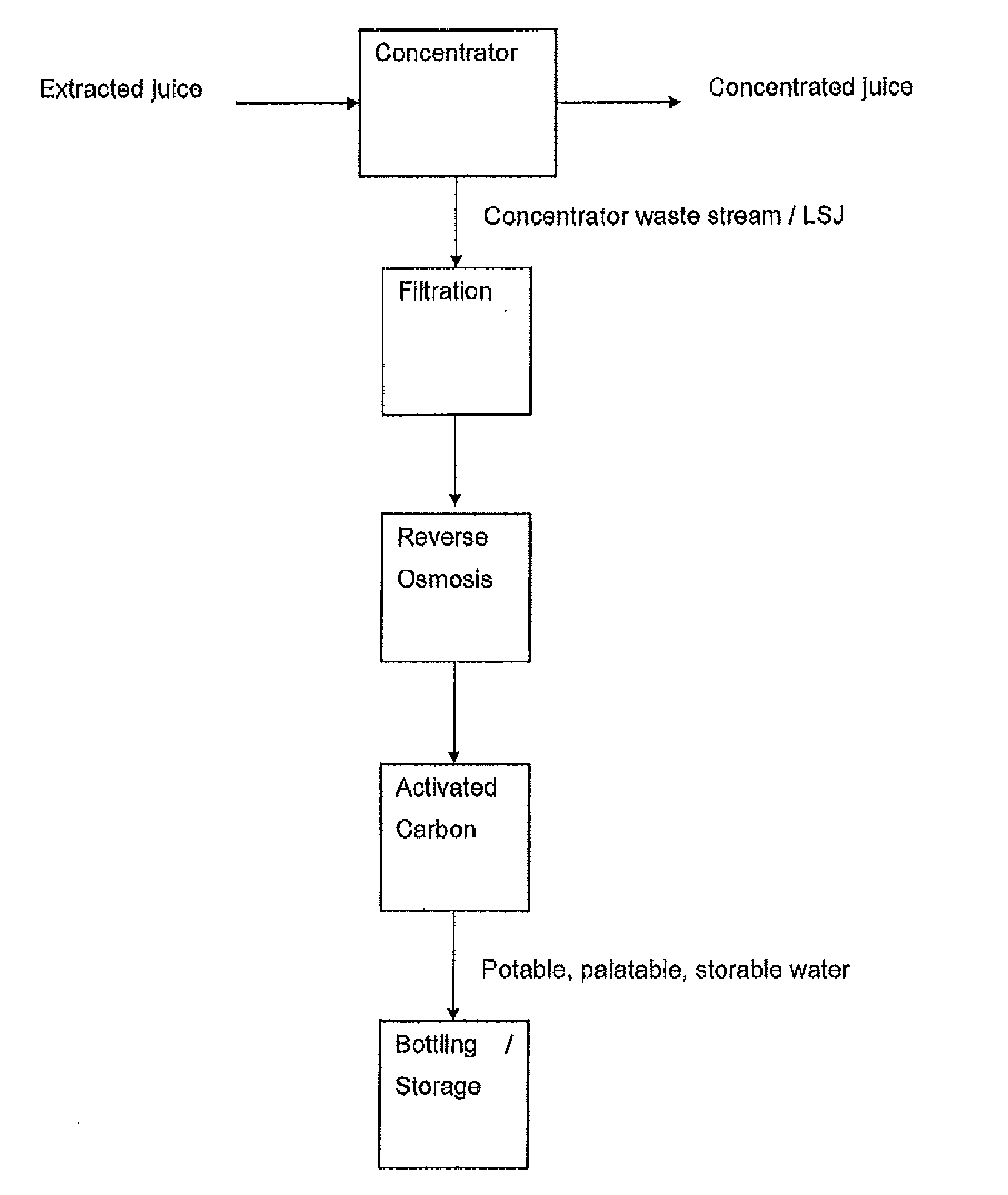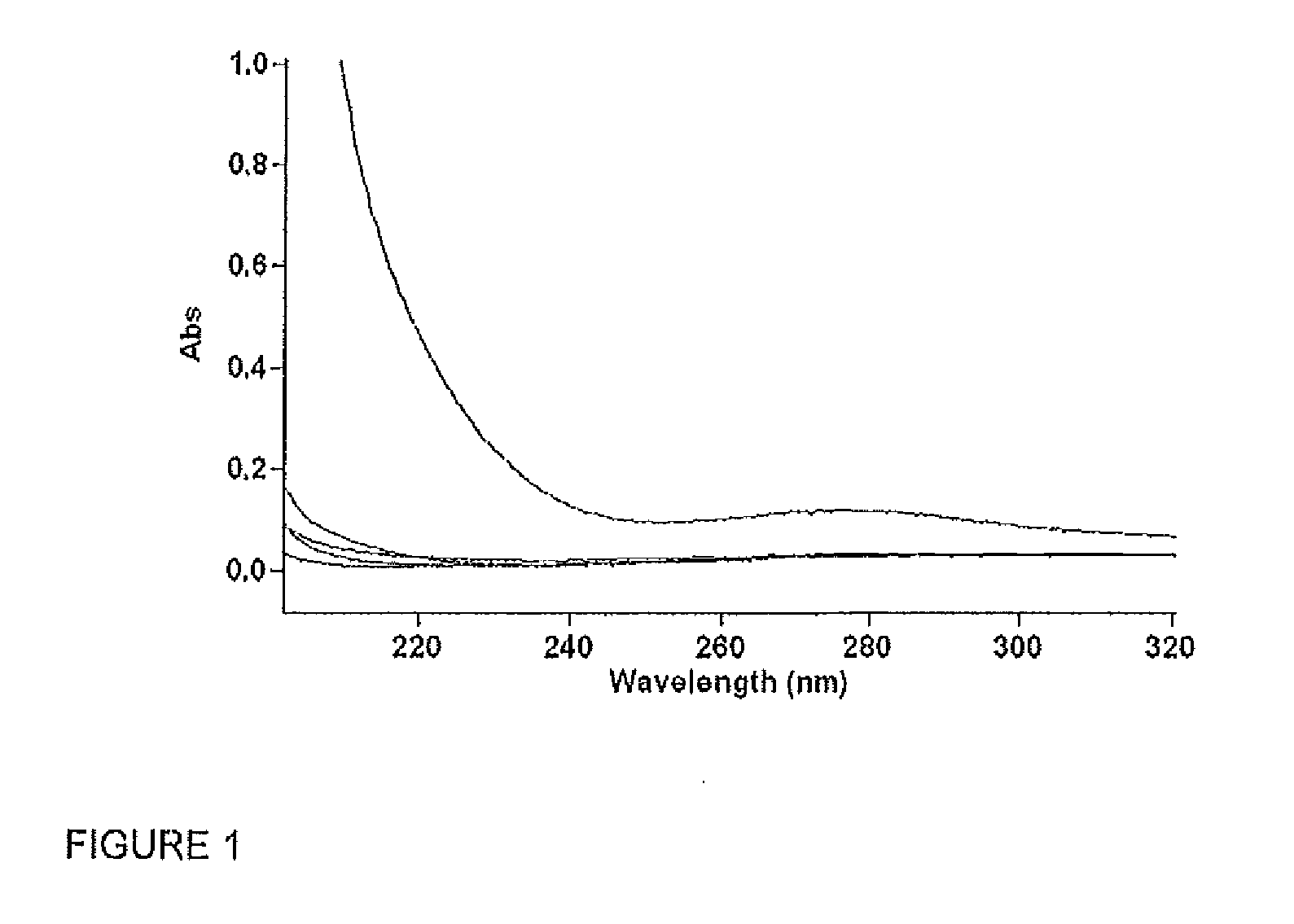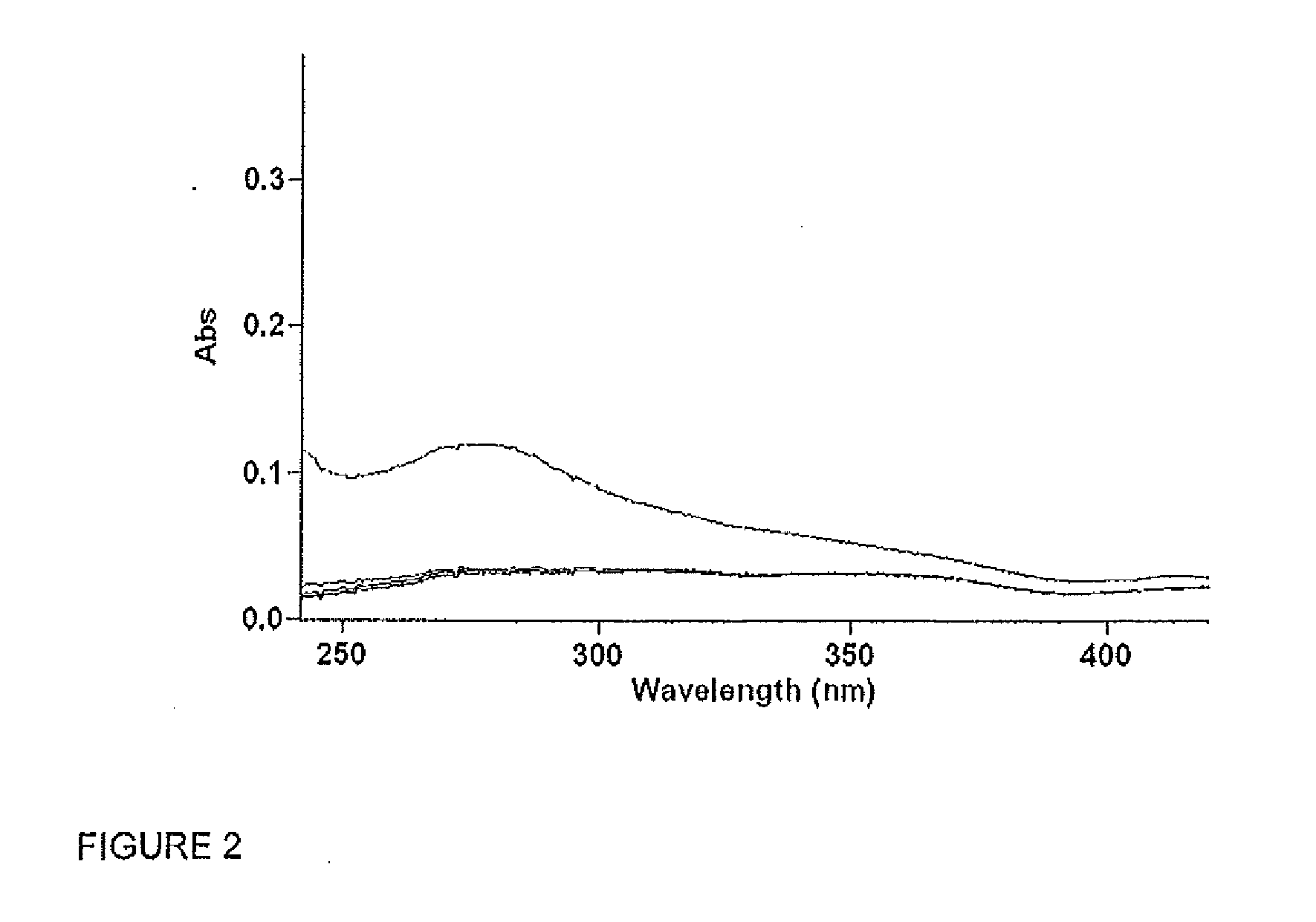Recovering water
- Summary
- Abstract
- Description
- Claims
- Application Information
AI Technical Summary
Benefits of technology
Problems solved by technology
Method used
Image
Examples
example 1
Recovering Palatable Potable Storable Water from Grape-Derived LSJ
[0114]
TABLE 1Change in composition of raw grape LSJ following processing withreverse osmosis and activated carbon. Final composition is treatedLSJ fortified with mineral formula and carbonation.TreatedFinalConstituentAbbreviationUnitsRaw LSJLSJcompositionTDSMg / litre37527.0993HardnessCaCO3Mg / litre216pH2.96.15.6BicarbonateMg / litre0.0311CalciumCaMg / litre0.35170ChlorideCl—Mg / litre10.00187MagnesiumMgMg / litre0.20.960ManganeseMnMg / litre0.00.02PotassiumKMg / litre56.23SodiumNaMg / litre3.21.934SulphateSO4Mg / litre80.6375TOCMg / litre600230230FluorideFMg / litre90.49IronFeMg / litre0.10.16NitrateNO3Mg / litre0.00.02SeleniumSeMg / litre0.1SilverAgMg / litre0.0ZincZnMg / litre0.0
[0115]The Heterotrophic plate count (most probable number (MPN) / 100 ml) was 2, Total coliforms (MPN / 100 ml) was 0. E-coli (MPN / 100 ml) was 0.
[0116]The above represents only one example of the process that can convert raw LSJ into a desirable carbonated water drink that has...
example 2
Assessing Properties
[0117]Objective analysis of the quality of LSJ and the type of treatment required to optimise its composition to a level of acceptance for storage, potability and / or palatability can be achieved using spectrophotometer analysis. The example here demonstrates how raw grape-derived LSJ produced by the process of evaporation of grape juice can be assessed, and the appropriate treatment determined.
[0118]In the following example, several constituents were determined for the following treatments and reference samples:[0119]1. Purified laboratory water.[0120]2. Raw grape LSJ without further treatment[0121]3. Raw grape LSJ treated with granular activated carbon (GAC).[0122]4. Raw grape LSJ treated by reverse osmosis then GAC.[0123]5. Potable Australian tap water.
[0124]Table 2 below, follows the constituent levels of grape derived raw LSJ and the effect of the different processing steps. It offers a comparison between all these treatments and laboratory purified water and...
PUM
 Login to View More
Login to View More Abstract
Description
Claims
Application Information
 Login to View More
Login to View More - R&D
- Intellectual Property
- Life Sciences
- Materials
- Tech Scout
- Unparalleled Data Quality
- Higher Quality Content
- 60% Fewer Hallucinations
Browse by: Latest US Patents, China's latest patents, Technical Efficacy Thesaurus, Application Domain, Technology Topic, Popular Technical Reports.
© 2025 PatSnap. All rights reserved.Legal|Privacy policy|Modern Slavery Act Transparency Statement|Sitemap|About US| Contact US: help@patsnap.com



